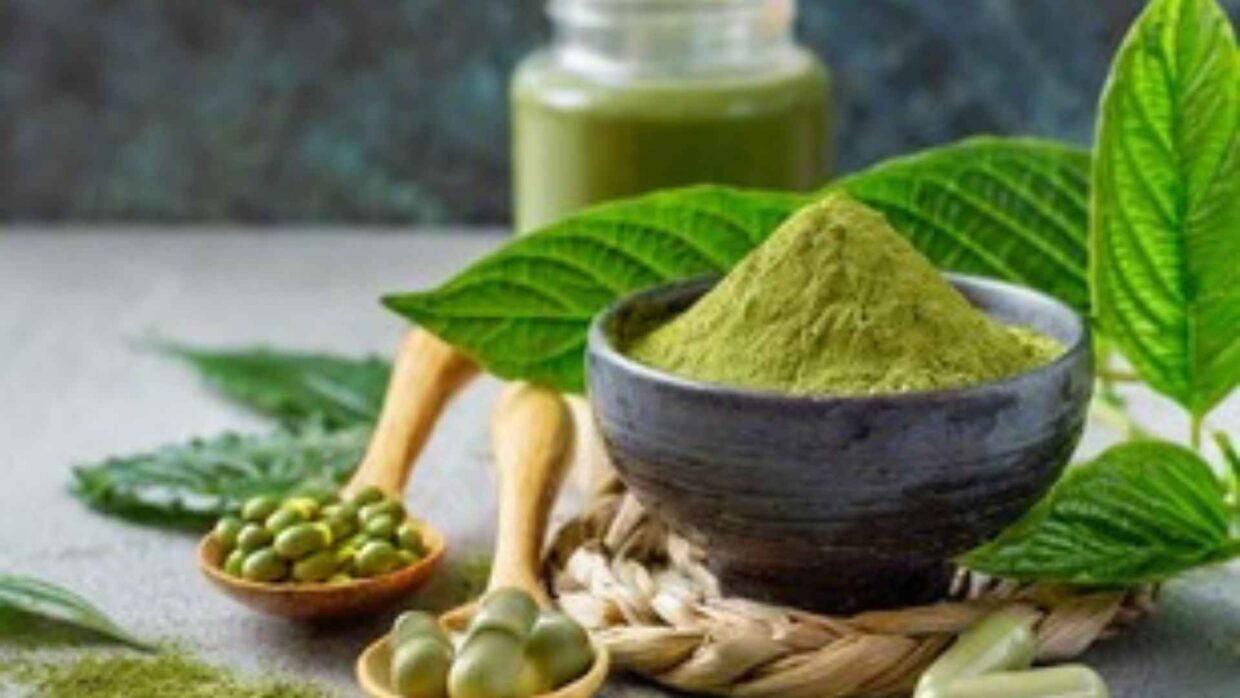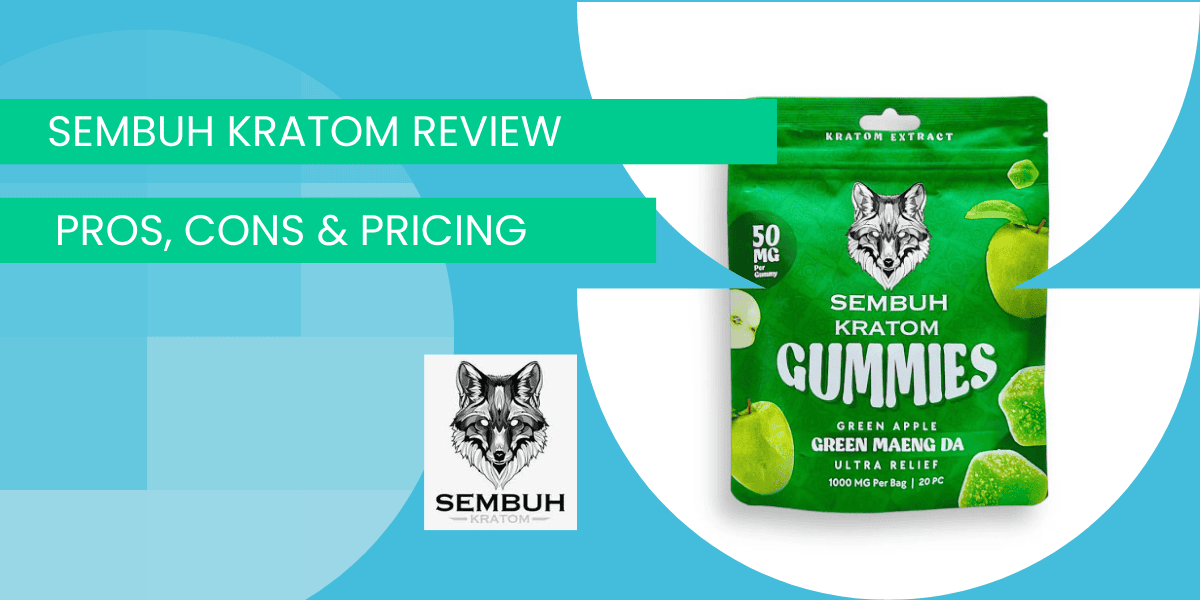A tropical plant from Southeast Asia, kratom has generated controversy and interest in the United States and the rest of the world. Lauded as a natural treatment of pain, anxiety, and opioid withdrawal symptoms by some and decried as a dangerous, addictive drug by others, kratom is the subject of myths, misinformation, and conflicting reports.
In this blog, we’ll distinguish between kratom facts and fiction, its effects, and whether it is legal, its regulation, safety, and who is allowed to purchase it legally.
Basics of Kratom
Kratom (Mitragyna speciosa) is a tree native to such countries as Thailand, Malaysia, and Indonesia. Its leaves are traditionally chewed, made into tea, or utilized in cultural practices as a source of energy, a pain reliever, and a relaxant.
Kratom has become popular in the West in recent years, with powders, capsules, extracts, and even beverages being sold.
Kratom Effects: Fact vs Fiction
1. Fact: Kratom Can Have Both Stimulant and Sedative Effects
When taken at low doses, kratom acts as a stimulant and enhances alertness, energy, and sociability. In larger amounts, it is more sedative and analgesic; occasionally, it can bring euphoria or relaxation.
This two-pronged attack is because the key alkaloids in the plant, mitragynine and 7-hydroxymitragynine, bind to opioid, serotonin, and adrenergic receptors in the brain.
Fiction: Kratom Is Always Safe Because It’s Natural
The perception that kratom is harmless since it is of plant origin is held by many people. Kratom may bring about various side effects such as nausea, constipation, dizziness, dry mouth, frequent urination, and at high doses, confusion, hallucination, and even seizure or coma.
Psychosis and overdose of kratom have been reported, particularly when the drug is taken in high doses or combined with other substances.
2. Fact: Kratom Can Be Addictive
Kratom’s opioid-like effects mean it can be habit-forming. Regular use can lead to tolerance, dependence, and withdrawal symptoms similar to opioids, such as muscle aches, insomnia, irritability, and cravings. The risk of addiction increases with higher doses and frequent use.
Fiction: Kratom Is a Proven Treatment for Opioid Withdrawal
Although individuals take kratom to self-treat opioid withdrawal symptoms, no valid scientific evidence exists to prove that it is safe and effective in doing so.
Medical professionals and the FDA issue warnings that kratom is addictive on its own and could make the process of withdrawal or recovery difficult.
Is Kratom Regulated? Understanding Kratom Regulation
1. Fact: Kratom Is Not Federally Regulated in the U.S.
The Food and Drug Administration (FDA) does not regulate kratom at the federal level or accept any medical use of the drug. That is, kratom products do not have to meet any safety, quality, or labeling requirements that apply to other supplements or medications.
Kratom is cited by the Drug Enforcement Administration (DEA) as a “Drug and Chemical of Concern,” although it is not yet scheduled as a controlled substance.
Fiction: Kratom Is Legal Everywhere in the U.S.
The legality of kratom is highly state (and in some cases, city or county) specific. By 2023, kratom will be prohibited from purchase, sale, possession, or consumption in Alabama, Arkansas, Indiana, Rhode Island, Vermont, and Wisconsin.
Even some cities and counties in otherwise legal states have prohibited kratom. Some states, such as Australia, Malaysia, and most European Union countries, have prohibited the use of kratom completely.
2. Fact: Some States Have Enacted Kratom Regulation
A growing number of states have adopted the Kratom Consumer Protection Act (KCPA) or similar laws, which set standards for kratom product purity, labeling, and sale.
Such laws frequently demand third-party laboratory testing, a ban on selling kratom to underage people, and clear labeling. Arizona, Colorado, Florida, Georgia, Nevada, Oregon, Texas, Utah, Virginia, and West Virginia are the states that have some sort of kratom regulation.
Kratom Buying Legal Age: Fact vs Fiction
Fact: There Are Age Restrictions on Buying Kratom in Many States
Depending on where you live, the legal age to buy kratom is either 18 or 21. For example:
- In Arizona, Georgia, Illinois, Minnesota, Nevada, Oklahoma, Texas, and Utah, you must be 18 or older to purchase kratom.
- Some states and localities are considering raising the legal age to 21.
- Selling kratom to minors is illegal in states with age restrictions, and penalties can include fines or misdemeanor charges.
Fiction: Anyone Can Buy Kratom Without Restrictions
In states with regulations, retailers are required to check ID and keep kratom products out of reach of minors. In several states, kratom has to be stored behind the counter, and the products cannot be marketed or packaged in a manner that is attractive to children.
Kratom Regulation: Fact vs Fiction
Fact: Kratom Regulation Is Increasing
Public health concerns, reports of adulterated products, and rising calls to poison control centers have led more states to consider or enact kratom regulation. These regulations are designed to:
- Prevent sales to minors
- Ensure product purity and accurate labeling
- Ban synthetic or highly potent kratom alkaloids
- Require registration and batch tracking for manufacturers
Fiction: All Kratom Products Are Safe and Pure
The fact that kratom is not tightly regulated on the federal level yet allows the quality and purity of products to differ dramatically.
There are cases of some kratom products being contaminated or having heavy metals or even synthetic drugs. Some measure of safety can be guaranteed only by products of reputable vendors offering third-party lab testing.
Kratom Effects: Fact vs Fiction
Fact: Kratom’s Effects Depend on Dose and Individual Biology
- Low doses: Stimulation, increased energy, sociability, and alertness.
- Moderate to high doses: Sedation, pain relief, euphoria, and sometimes confusion or hallucinations.
- Long-term use: Can lead to weight loss, insomnia, anorexia, and in some cases, psychosis or liver injury.
Fiction: Kratom Is Always Predictable
Since the active compounds in kratom may differ plant-to-plant, region-to-region, and processing-to-processing, its effects are unpredictable–even with the same dose. Add to this unpredictability the absence of regulation and the possibility of adulteration.
Kratom Myths Debunked: More Facts vs Fiction
1. Myth: Kratom Is a “Safe High” Because It’s Plant-Based
Fact: Plant-based does not mean risk-free. Kratom can cause serious side effects, interact dangerously with other medications, and lead to overdose or death in rare cases—especially when mixed with other substances or taken in high doses.
2. Myth: Kratom Is Not Addictive
Fact: Kratom can be addictive, and withdrawal can be unpleasant. Symptoms may include muscle aches, insomnia, irritability, and cravings, similar to opioid withdrawal.
3. Myth: Kratom Is Banned Everywhere
Fact: Kratom is still legal in the majority of states across the U.S., albeit with some levels of restrictions. Nevertheless, it is prohibited in a few states and most countries across the world.
4. Myth: Kratom Is a Cure-All
Fact: Although there are anecdotal reports of pain, anxiety, or opioid withdrawal improvements, there is no high-quality clinical data to support the safety and efficacy of kratom as a treatment in any medical condition.
Kratom has not been approved by the FDA to be used in any way, and health officials are warning people not to engage in self-medicating with kratom.
The Future of Kratom Regulation
The debate over kratom’s safety and legality is ongoing. Advocates argue for reasonable regulation, such as the KCPA, to ensure safe access for adults and protect consumers from contaminated products. Opponents point to the risks of addiction, overdose, and the lack of medical oversight.
Final Thoughts
To summarize, the distinction between kratom facts vs fiction is essential as the legislation and the social attitude change. Although kratom is potentially beneficial, it also has risks and side effects, including addiction, particularly in the case of unregulated products.
Legal age and restrictions: In order to safeguard the consumers, legal age and restrictions are being increased. The safest and most responsible use is to stay updated on new information, select quality sources, and turn to medical workers.
Also, Read:










